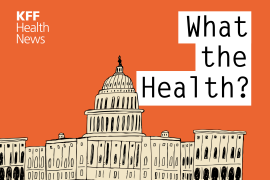Viewpoints: Long-Term Care Insurance Faces A ‘Daunting Challenge’; Do Prisoners Deserve Pricey Cures?
Opinion writers from around the country express views on a range of health issues.
Bloomberg:
What’s Bad For GE Will Be Worse For America
General Electric’s multi-billion-dollar loss in a unit that sold long-term-care insurance is a blow from which the iconic company is still reeling. But it’s also a harbinger of a much greater challenge for society at large: paying to care for the growing number of Americans who can’t look after themselves. (1/29)
St. Louis Post Dispatch:
Editorial: Do States Owe Sick Prisoners A Super-Expensive Cure?
Missouri will spend about $147 million this year on health care for its 32,500 prison inmates. That could go up by $236 million if a judge orders the state to treat just 2,500 of its prisoners with Harvoni, a new drug that can cure hepatitis C. An already bleak state budget picture could get considerably bleaker. But 2,500 people, whose serious medical needs the state has a legal obligation to meet, would get potentially life-saving treatment. (1/29)
Stat:
Sepsis: The Achilles' Heel Of Health Care
Hospitals are getting better at combating sepsis. Doctors and nurses across the country have done incredible work to improve sepsis awareness. They are preventing more sepsis-causing infections before they ever occur, and they are reaching for antibiotics quicker when sepsis is suspected. Yet advances in sepsis treatment protocols are fueling another massive health care issue: the rise of drug resistance and superbugs. (John McDonough, 1/29)
Arizona Republic:
Opioid Epidemic Act Could Cause Arizona Lots Of Pain
Without a single “no” vote, Arizona lawmakers quickly passed Gov. Doug Ducey’s opioid legislation despite expressing legitimate concerns about the possible unintended consequences. ...It will take scrupulous and continuous monitoring to make sure those who need opioids to control pain do not suffer because the state passed regulations inspired by those who abuse these powerful drugs. (1/29)
The Wall Street Journal:
Review: How To Achieve ‘The End Of Epidemics’
For scare value, the 2014 Ebola epidemic looms largest in recent memory; while it ended by killing “only” 11,310 people in West Africa, it looked for a time as if it might become a global catastrophe. But for deadliness, the 1918-19 Spanish influenza pandemic, which killed at least 50 million people, dwarfs any infectious outbreak of the past 100 years. ...“The End of Epidemics,” Jonathan D. Quick’s alarming, cautionary plea for preparation, is both welcome and disturbing—as it should be, given the litany of risks he lays out with the assistance of veteran business writer Bronwyn Fryer. “The threat has never been greater,” writes Dr. Quick, a physician and public-health expert with 40 years of experience fighting disease in more than 70 countries. “Population growth, urbanization, international travel, food animal production practices, forest clearance, and a rapidly warming climate all increase our collective risk.” (Meredith Wadman, 1/29)
Sacramento Bee:
California College Students Need Easier Access To Abortion Pill
While campus centers provide quality health care at minimal cost to students, none offer abortion care. Each month, as many as 519 students at the 34 University of California and California State University campuses must seek abortions off-campus. (Connie Leyva and Kaitlyn Trevino, 1/29)
Los Angeles Times:
U.S. News Is Wrong About What Constitutes The Best Diet
Dieter beware: U.S. News & World Report, in its high-profile January cover story on "best diets," calls the DASH and Mediterranean diets tops for health, though these regimens represent the failed nutritional status quo of the last 50 years. DASH is listed first in the U.S. News rankings, but authoritative reviews have found that it's been tested on only about 2,000 subjects (mostly middle-aged hypertensives) in studies lasting no longer than six months. Its effects can hardly be generalized to all Americans. (Gary Taubes and Nina Teicholz, 1/28)






